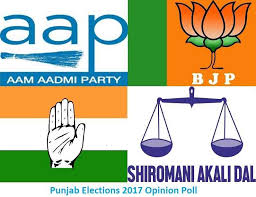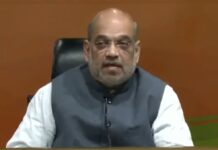Punjab is a northern Indian state of India, a “state of five rivers” located on the border with Pakistan. The state was a territory quested by both India and Pakistan, now it is divided by the demarcation line between India and Pakistan. The population of the state is 27.7 million which about 14% is in the whole country.
The Indian state of Punjab has legislature with 177 candidates elected for five years. Currently, its speaker is Charanjit Sigh Atwal. The unicameral legislature of Punjab was first summoned in 1937. Since 1970 it has been unicameral. Punjab has 117 assembly constituencies with the total number of about 27.7 million people. This year the election turnout was over 75%.
Of the 10 parties competing in the elections the parties which are now represented in unicameral legislature of Punjab are following.
Indian National Congress won 77 of 117 contested, which is 31 more than in the last elections. That is 38.5% of the vote share. It was just a bit unpredictable, because of the skyrocketing popularity of Aam Aadmi party, founded just only in 2012.
Aam Aadmi Party, with its high profile leader Arvind Kejriwal, won 20 seats of 112 contested, which is 20 more than in the last elections. That is 23.7% of the vote share. Surely, it was like a shock for a lot of Indian pundits and spin doctors. The majority of them predicted that this party should take at least 40-45 seats. Taking into account that just only two years ago this party received 67 places from 70 seats in Delhi Assembly elections. A lot of analysts expected the completely different Punjab political palette. The pre-election surveys showed the rhetoric of this party aimed against corrupted officials, local and foreign financial magnates, was quite successful. A lot of upper-middle-class and low middle-class people supported it. Nevertheless, the election result shows that the ideological points, close to Marxist party ideology slogans, are not so popular in Punjab province as in Delhi. Left wing party ideology turned out to be too shaky and inconvincible for Punjab province people.
Shiromani Akali Dal won 15 of 94 contested which is 41 fewer than in the last elections – 25.2% of the vote share.
Bharatiya Janata Party won 3 of 23 contested which is 9 fewer than in the last elections. That is 5.4% of the vote share.
Lok Insaaf Party won 2 of 5 contested the first two seats comparing with the last elections. That is 1.2% of the vote share.
As we can see Indian National Congress still predominates significantly with their 77 seats (that is 65.8 % of all the seats in the whole number of the seats.
The parties to count with are Aam Adami Party and Shiromani Akali Dal.
And the real loser is Shiromani Akali Dal, which have lost 41 seats.
It is important to say that Bharatiya Janata Party is led by Parkash Singh Badal, Chief Minister of the state.
So, these are results of the so long-expected event, which will influence the further development of the huge and influential India. The Indian mass media proved to be unreliable, which underlines one simple idea, the sociological companies of this huge country still more rely on prominent guru opinion, but not on high-quality sociological base.




